by Assi Philosoph
Israel is having one of its most difficult years in history, being attacked constantly on 7 different fronts in a war that has been ongoing since October 7th, 2023. The most painful part is the 101 hostages who have now been held captive by the terrorist group Hamas for more than 354 days.
Despite the complex situation, Israeli society is doing its best to keep sane, adjusting events accordingly. The Israeli Chess Federation, with the cooperation of the Jerusalem Municipality, have been able to host an event for hundreds of players looking for some escapism and to enjoy their beloved game.
Until the last moment, there was uncertainty as to whether the tournament would be held, especially because of the escalation at the northern front. However, in the end all the foreign players were able to fly in, and the Home Front Command guidance allowed the kickoff for the event.
So, how does the format work?
The event hosts 2 different tournaments from September 24th to 25th, as well as a huge simultaneous game on September 26th.
The main event is the Jerusalem Masters, where 10 top players are playing in a round-robin tournament. It involves 5 players from amongst the top chess players in the world and 5 players from the Israeli national team.
The top players are Peter Svidler (RUS, 2698), Jorden Van Foreest (NED, 2696), Daniil Dubov (RUS, 2693), Pavel Eljanov (UKR, 2679), and Vasyl Ivanchuk (UKR, 2635).
And the Israelis are Maxim Rodshtein (2600), Evgeny Postny (2577), Ilia Smirin (2575), Ido Gorshtein (2543), and Avital Boruchovski (2537).
The players are competing in 9 rounds, 15 minutes plus 5 seconds increment per move, for a total prize fund of 75,000 USD.
The Jerusalem Open is being played in parallel to the Masters with the same rate of play and number of rounds and a 30,000 USD prize fund. Despite the tense situation in the country, 289 players from the 317 registered turned up for the tournament in the open section. There are players from 11 different federations, including more than 9 GMs among 60 titled players.
From abroad, the strongest player is the Dutch Lucas Van Foreest accompanying his brother Jorden, who is playing in the Masters. It is not Lucas’ first visit this year to Israel, as he previously represented the Rishon LeZion Club in the Israeli National Team Club on its first board.
Worth noting also is the talented young Argentinian FM Ilan Schnieder, who is rated 2409 at only 13 years old. He is rapidly becoming one of the strongest players in his country, and it will be interesting to see how his career develops.
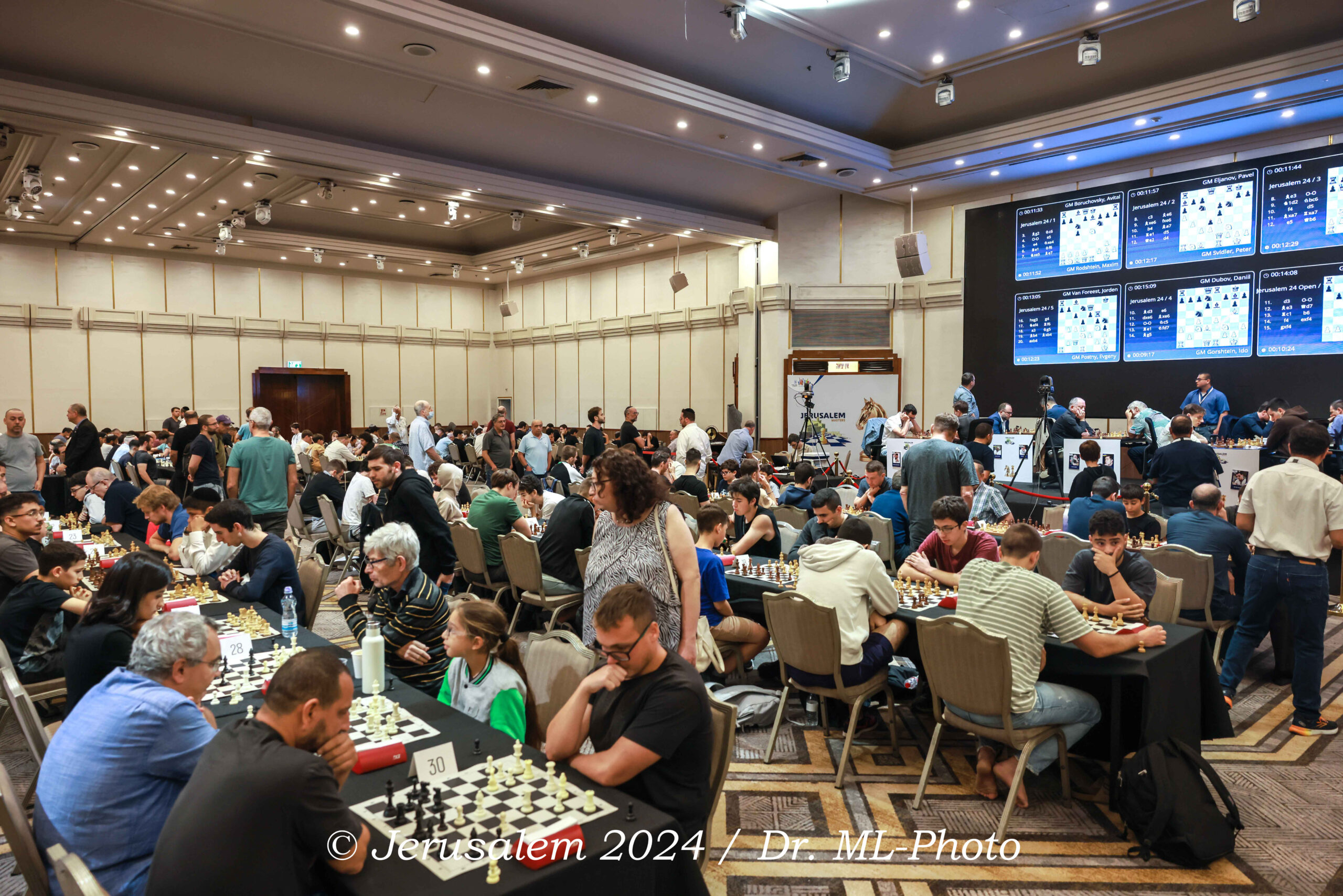 The playing hall
The playing hall
As mentioned, the closing activity of the event will be a huge simultaneous game on Thursday the 26th, in Safra square, Jerusalem, with 1000 people playing against 50 strong and notable Israeli players.
In addition to the 5 Israeli national team members, who are competing in the Masters tournament, here are some of the big names who will be playing in the simultaneous game:
*The young GM Yahli Sokolovsky, who is only 17 years old.
*The fresh European Under 18 Champion WFM Noga Orian.
* GM Yehuda Gruenfeld, the capital city’s strongest player.
*First Women Israeli board IM Marsel Efroimski
*The simultaneous record-breaking GM Alik Gershon. As some may remember, in October 2010, Gershon set the Guinness World Record for simultaneous games after playing 523 opponents in Tel Aviv. He will also be the online commentator of the main event.
*WFM Dana Kochavi, the medalist on the 5th board of the Olympiad with an incredible result of 8 out of 8.
And many many more Grandmasters and talented young Masters.
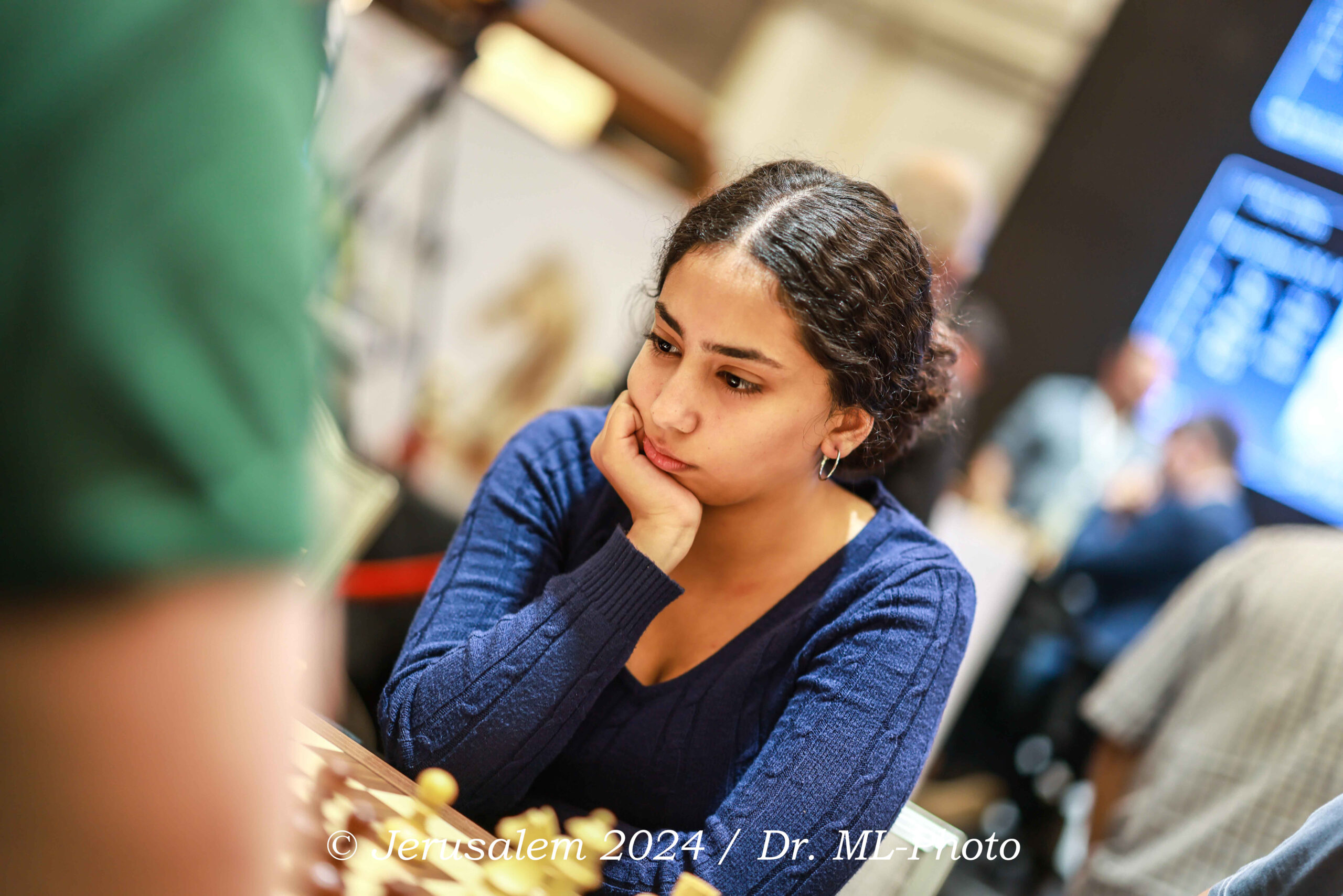 WFM Dana Kochavi
WFM Dana Kochavi
The first round began with a nice victory for the young Ido Gorshtein against Daniil Dubov.
After 25…Be5?, the current 22-year-old Israeli champion played 26.Rxd7! and Black lost material. Black took the rook with the bishop and lost the knight on c5. If he had taken the rook, 27.Nxe6 would have followed with 28.Rxd7

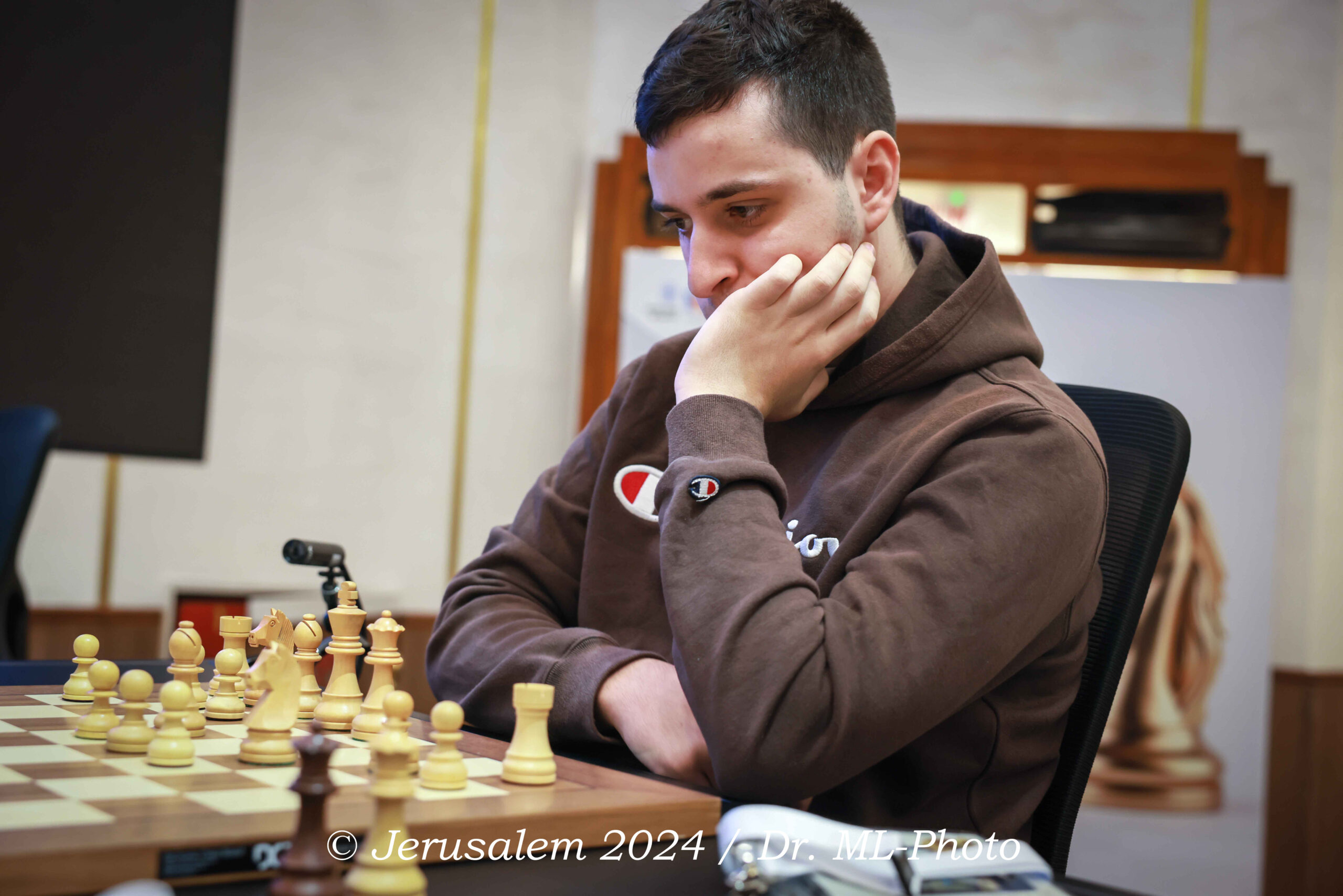 GM Ido Gorshtein
GM Ido Gorshtein
In the same round, the game Svidler – Eljanov was of interest because of mutual rook blunder over the ‘C’ file.

In the current position, Peter played 24.Rec1, allowing ...Nc5 with a double threat – taking the knight on c6 or forking on b3.
Black won the exchange, but a few moves later, after 32.Qd3 (D)

Eljanov played …Rac8 retrieving the favour on the same file, since after 33.Ng5 g6 34.Qf3 there is no decent defense for the Queen invasion. The game continued 34…Rf8 35.exf8=Q+ Rxf8 36.Qxd5! and White converted the advantage.
To highlight how even the GMs are not free from blunders during rapid play, let’s look the diagram position from the 2nd round Boruchovsky - Van Foreest

In this position, White played the “natural” 17.Bg5, but after 17…c4 found his other bishop trapped and lost after a few moves.
The Israeli Maxim Rodshtein, who had a good performance in the Olympiad (2707 with 7.5 out of 10), struggled on the first 3 rounds with only half a point, but showed a good technique in the pawn endgame against Gorshtein (D) in the 4th round:

After 59…f6? (exchanging the bishop immediately would have drawn).
And now 60.Kg6 Bxf5+ 61.Kxf5 Kf7 62.g4 Kg7 63. Ke6 c5 64.Kd5 Kh6 65.Kxc5 Kg5 66.Kd6 f5 67.h6 1-0
Also in the 4th round, the two solo leaders, Svidler and Ivanchuk, with 2.5 points each, drew in a sharp game which was played quite precisely by both sides.

In the diagram position, Svidler interestingly sacrificed the exchanged 30.Rxh4 Qxd2 31.Rxg4+ Kh8 and after 32.Ne4 Black found nothing better than repeating the position, since he may be in danger of losing if the knight invades f6 in front of his weak king. Qd1+ 33. Kg2 R3f5 34. Rh4 Qf3+ 35. Kg1 Qd1+ 36. Kg2 Qf3+ 37. Kg1 Qd1+ draw
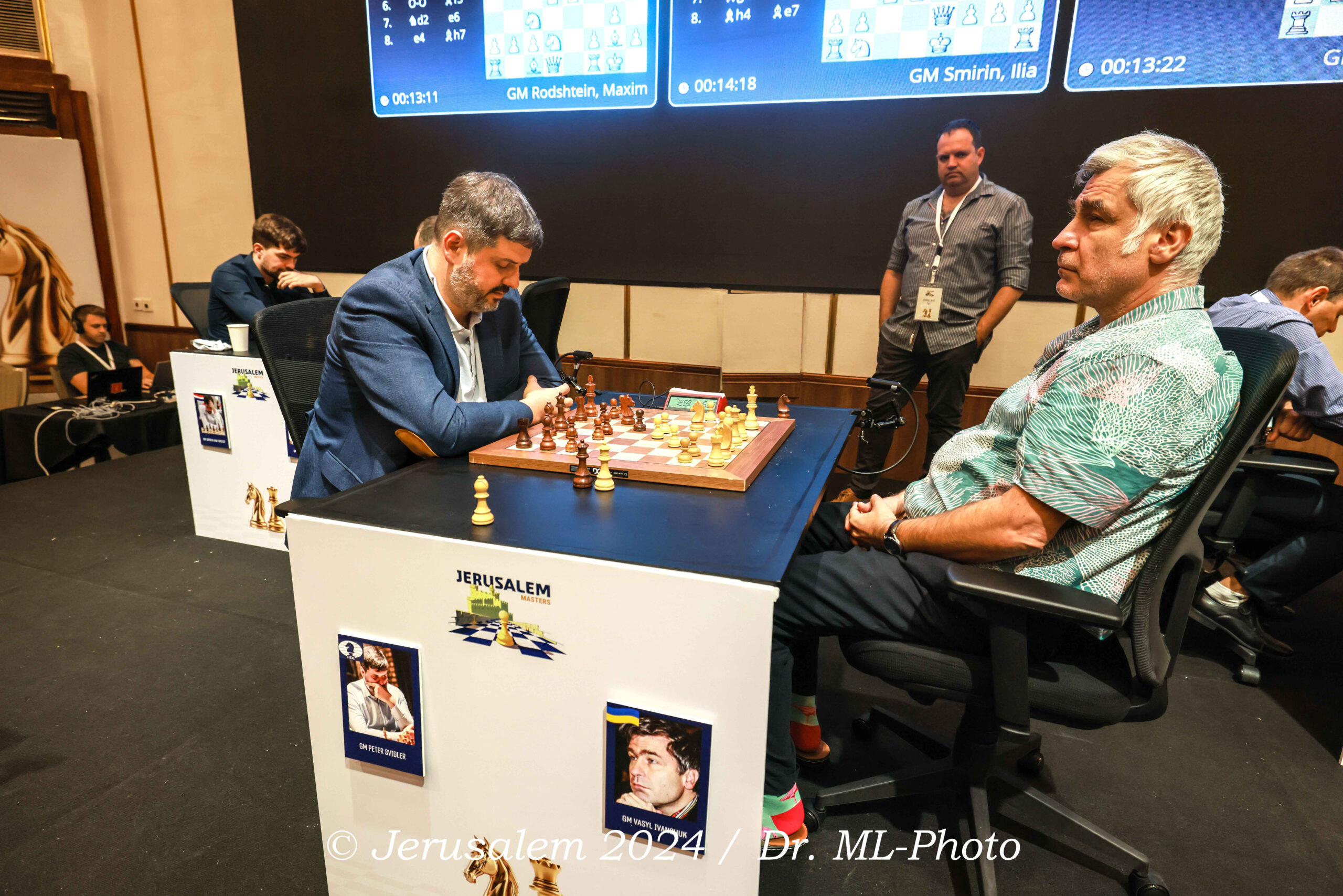 Svidler and Ivanchuk
Svidler and Ivanchuk
Peter said in an interview with Almira Skripchenko after the end of the day:
“I haven’t played against Vasyl a long time, and I always enjoy playing against him… We tend to bring out the best of each other and our games tend to be very sharp, so it’s enjoyable to see that this continuous we became greyer and greyer”. For the full game click here.
Svidler and Ivanchuk, won the 5th round, against Boruchovsky and Gorshtein respectively, finishing the day leading by a full point ahead of Smirin (3 points) who escaped with a draw against Van Foreest. In the diagram position, Jorden played the nice and entertaining move 19.Rd5!

The game continued …Bc6 (of course taking the rook would lead to a fork, or 19…Rxc3 would be answered by the game move anyway) 20.Rxd6 Rhd8 21.Bc4 Ke8 and now Van Foreest missed the opportunity to conclude the game with 22.Bxe6! fxe6 23.Qg5! Rxd6 24. Rxd6 Kf7 25.Nd5! the hardest move to spot in the variation ...Qd4 (25…exd5 leads to a force mate after 26.Qxg6) 26.Qe7+ Kg8 27.Qxe6+
The game continued with 22. Rd3, with a still advantageous position for White, which Smirin was able to hold after fighting tooth and nail.
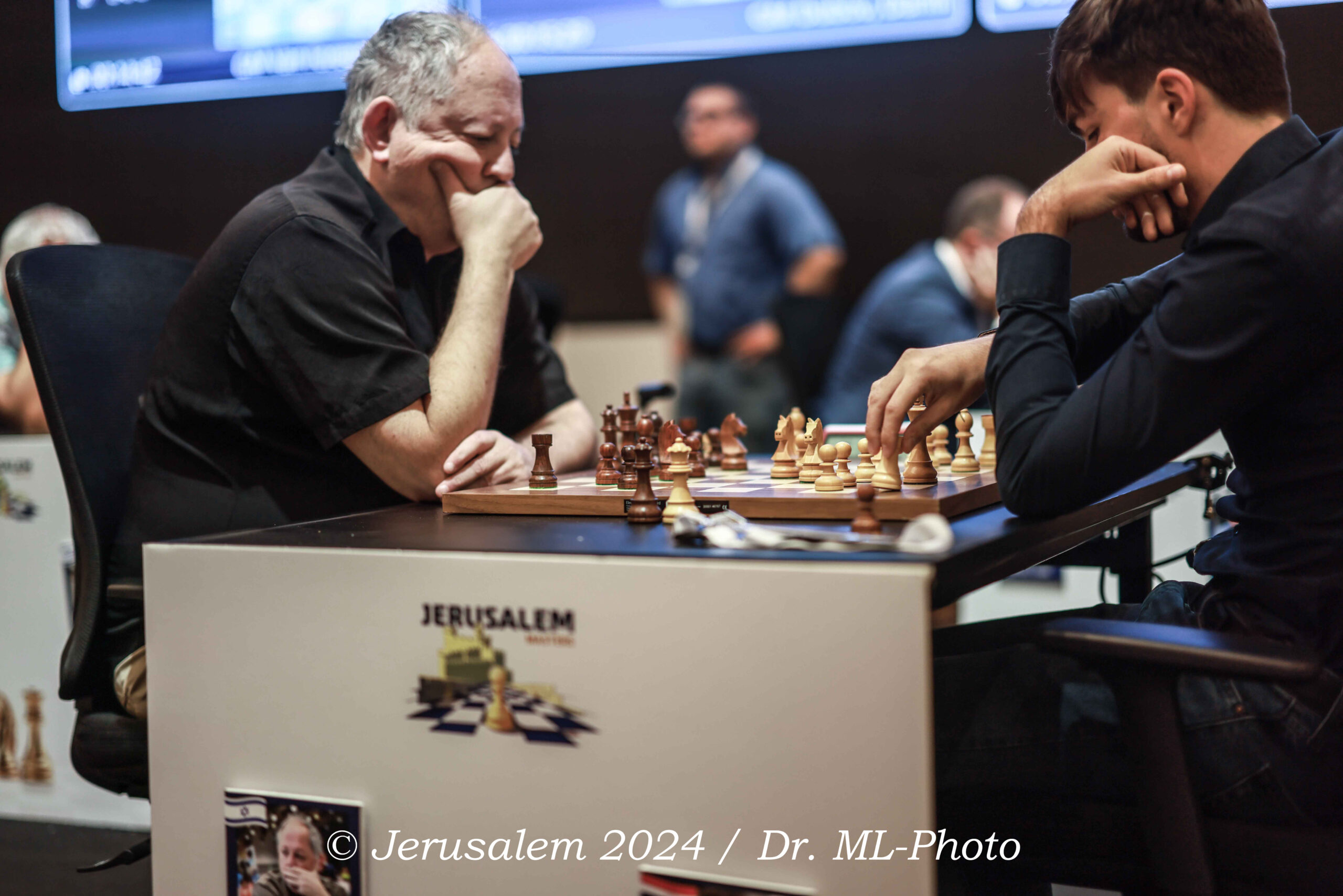 Smirin and Van Foreest
Smirin and Van Foreest
After 5 rounds ,the foreigners invited players summed together with 15.5 points against only 9.5 of the locals. It is also interesting to notice that the three leaders are the older members of the tournament, leaving the young generation behind. Let’s see what the second day will bring us!
In the Open Section, there are five leaders with 5 points after five rounds: IM Yannay Ben Ari ISR, Lucas Van Foreest NED, IM David Gorodetzky ISR, GM Yahli Sokolovsky ISR and GM Victor Mikhalevski.
Lucas won a short game in the 4th round after a blunder from the experienced Israeli IM Leon Lederman. In this position, Black played an early central break 11…e5?

12.Qf3! double threat Qf6 13.Qxb7 Qc6 14.Qc8+ Ke7 15. Ba3+ 1-0
In the game Mindlin – Sasson from the 2nd round, the strong IM blundered with 18. Qxf4

This time, the move …e5 was correct, and after 19. Qc1, Black picked up the knight on b3 for free.
To conclude the first day, a great finish by the GM Victor Mikhalevski against Ilay Zakin

After 30…Bf6 (D) White played 31. Rg8+! Kxg8 32. Qxf6 Ra8 33. Re7 and Black resigned.